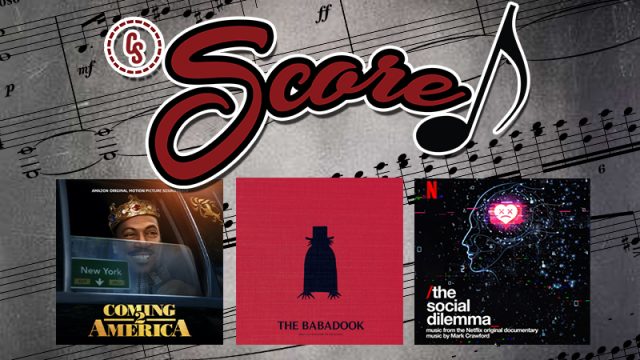Ayo, film score junkies! We’ve got some cool soundtracks coming out this month, including Tom Holkenborg’s scores for Zack Snyder’s Justice League and Godzilla vs. Kong, Henry Jackman’s score for Falcon and the Winter Soldier and James Newton Howard’s score for Raya and the Last Dragon. We’ll hit those later this month, but today we’ve got a great treat as CS Score was able to sit down and talk to composer Jermaine Stegall about his work on Coming 2 America! We also spoke with Mark Crawford about his score for the Netflix documentary The Social Dilemma which led to some great insight into his scoring process. [Cue infomercial music] But wait! There’s more! Because we also got our hands on Waxworks Records’ vinyl albums for The Babadook and The Haunting of Bly Manor; and got to premier exclusive tracks from the films Underplayed and Crisis. Phew.
Let’s do this thing!
News
…and here we… go. https://t.co/q14MBJKSrS
— Tom Holkenborg (@Junkie_XL) March 4, 2021
BACK IN STOCK NOW at https://t.co/M4LZNDtqCp – #Superman The Movie 40th Anniv 3-CD #Soundtrack Set by #JohnWilliams ! @DCComics @SupermanHomepge pic.twitter.com/FIBqxoAsON
— La-La Land Records (@LaLaLandRecords) March 4, 2021
Pre-order tomorrow! ALICE, SWEET ALICE Original 1976 Motion Picture Soundtrack by Stephen Lawrence. Featuring the terrifying film music for the very first time in any format, sourced from the unearthed original master tapes, new artwork by @stevereevesart, and more! 11am on 3/5! pic.twitter.com/bhDtL3W1ow
— Waxwork Records (@waxworkrecords) March 4, 2021
Back in stock: SILVERADO (2CD). https://t.co/YFQ8wlDAdz
— Intrada (@IntradaCDs) March 4, 2021
The @SpongeBobMovie: #SpongeOnTheRun is out today! It features a deep dive score from me and my brilliant friend @SteveMazzaro, freshly recorded 60 feet under at Bikini Atoll! Stream it on @ParamountPlus or rent from digital stores: https://t.co/3rHA2vfbno. #BringGaryHome pic.twitter.com/VcKs7qIzgC
— Hans Zimmer (@HansZimmer) March 4, 2021
SOUNDTRACK EXCLUSIVES
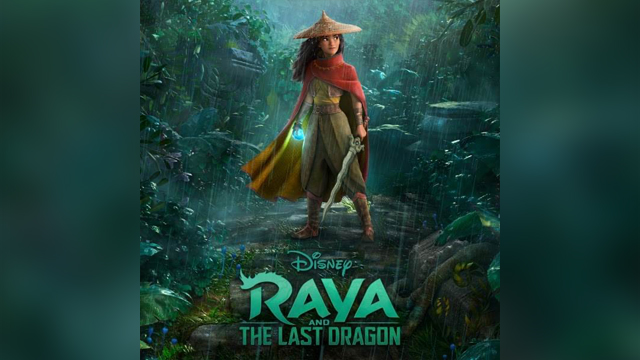
Check out this look at Walt Disney Animation Studios’ Raya and the Last Dragon’s new original song, “Lead the Way,” written and performed by Grammy-nominated artist and songwriter, Jhené Aiko. Oscar-nominated, Emmy, and Grammy-winning composer James Newton-Howard (News of the World, A Hidden Life, Fantastic Beasts: The Crimes of Grindewald) created the original score. “Lead the Way” is featured in the end credits and is included on the Walt Disney Records soundtrack, available digitally on Feb. 26. The music video for the track featuring Aiko is directed by one of Raya and the Last Dragon directors, Carlos López Estrada, and will be released next month.
One Day at a Time from Underplayed
by Kate Simko
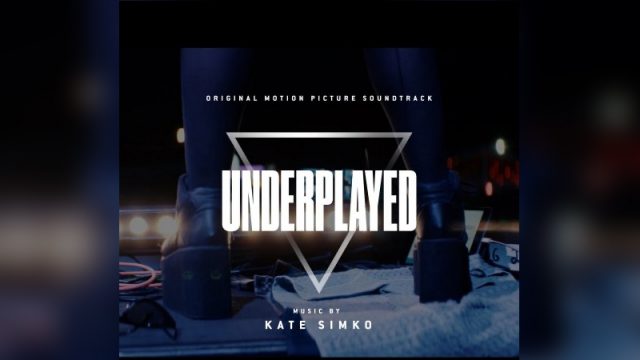
Check out a track titled “One Day at a Time” from composer & DJ Kate Simko’s new score Underplayed— a documentary about the struggles of female DJs in the EDM circuit. Kate pulled from her own unique experiences as a female DJ to score the film, which was an official selection of both the 2020 Tribeca Film Festival and TIFF, and releases on the Amazon Music Mobile App and Amazon Prime Video next week on Monday, March 8th. The soundtrack is available now!
Buy Link: https://smarturl.it/underplayed
We Were Lucky to Get Him from Crisis
by Raphaël Reed
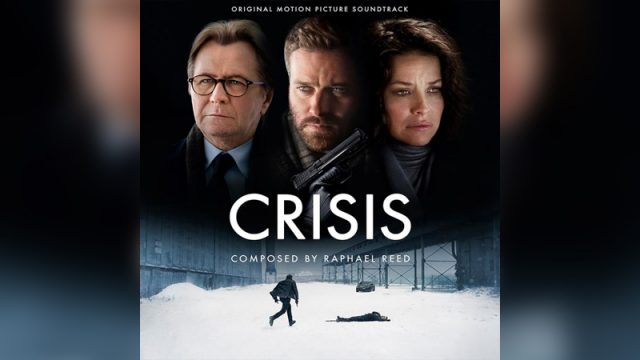
Check out the track “We Were Lucky to Get Him” below from Raphaël Reed’s score to the dramatic thriller Crisis starring Gary Oldman. French Canadian composer Raphaël Reed landed the project when director Nicholas Jarecki (Arbitrage) asked him to submit some gritty electronic music that would suit the film’s narrative. Upon reading the script, the composer created an experimental and heartfelt piece of music that spoke to Nicholas so much that it ended up becoming the main theme of Crisis.
Throughout the scoring process, Raphaël had creative discussions with Nicholas and music advisor Cliff Martinez about the music’s role in the narrative of an opioid crisis.
The OST is available now!
Buy Link: https://www.varesesarabande.com/products/crisis
REVIEWS
Waxworks Records was awesome enough to send us three amazing vinyl soundtracks this month — The Babadook by Jed Kurzel, The Haunting of Bly Manor by The Newton Brothers — and, woo boy, are they glorious to behold! Here’s a breakdown of each.
THE BABADOOK
By Jed Kurzel
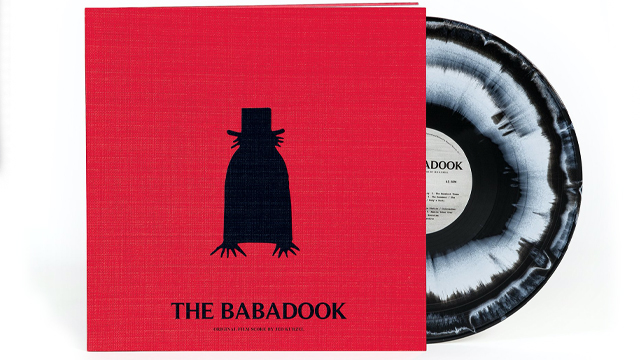
First up, The Babadook is an absolute creep fest loaded with eerie choir and synthetics that will turn your blood cold. And that’s all before that freaky xylophone-sound makes its appearance. There are a couple of interesting melodies on display, such as in the tracks “The Babadook Theme” (featuring said xylophone) and “Shopping Mall,” but mostly the rather brief (at just under 30 minutes) score oozes with nightmarish atmosphere; and works wonders in Jennifer Kent’s terrific 2015 film.
This release by Waxwork Records is a must for fans of the film. The packaging is fantastic with the outer cover mirroring the book in the film. The vinyl then opens and features a pop up image of the film’s top hat toting demon with the phrase, “If it’s in a word, or it’s in a look … You can’t get rid of the Babadook.” Also inside is an original 12×12 artwork designed by Jessica Seamans of LandLand and a 180 gram “Babadook” black and white swirl vinyl.
Essentially, if you’re a fan of The Babadook and want to relive the modern classic via its dark and chilling score then head over to Waxworks to pick this album up!
THE HAUNTING OF BLY MANOR
By The Newton Brothers
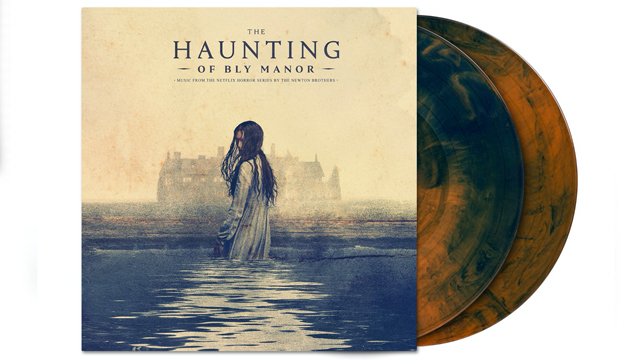
The Haunting of Bly Manor was by all accounts a success. Though nixing the intensity of its predecessor, The Haunting of Hill House, in favor of something akin to a gothic romance, Mike Flanagan’s Netflix series packs an emotional wallop and enough ghostly shenanigans to keep audiences interested right down to the last episode.
As such, the Newton Brothers’ score is driven more by emotion than horror. The tracks are quite short, with most clocking in at roughly a minute or so, but they are brimming with emotion, played out with quiet piano, mournful strings and violin. Listen to the track “I Think I’m Crazy,” which blends all of these elements to produce a heart aching musical experience.
There are a few “scary” tracks, such as “Lady of the Lake,” which occasionally makes the listening experience slightly jarring, especially when the softer elements are interrupted by a gotcha burst of music; and while the score does get a tad redundant (much like the show) at times, the musical journey ultimately proves worthwhile.
As with Babadook, Waxwork Records packages Bly Manor in deluxe packaging that includes its own 12×12 insert (featuring those creepy dolls seen throughout the series) and the complete score spread out over two LPs.
JERMAINE STEGALL TALKS COMING 2 AMERICA
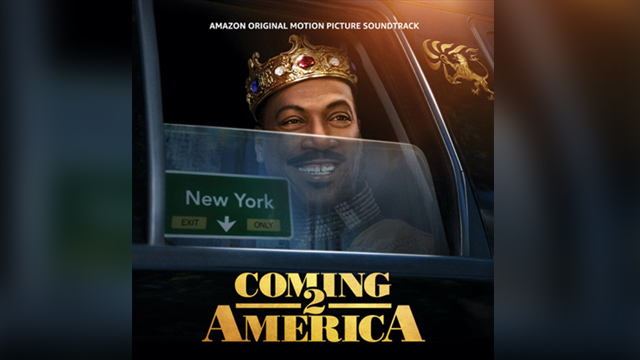
Jermaine Stegall landed the opportunity of a lifetime when he was given the chance to score Coming 2 America, the sequel to the 1988 blockbuster Coming to America, and he jumped at the chance, composing a great score full of exotic instruments, African influence and plenty of heart. Lucky for us, Jermaine took the time to speak with CS Score about his experience producing the soundtrack and lending his talents to the anticipated blockbuster.
Set in the lush and royal country of Zamunda, Coming 2 America continues to follow newly-crowned King Akeem and his trusted confidante Semmi embark on an all-new hilarious adventure that has them traversing the globe from their great African nation to the borough of Queens, New York – where it all began.
The sequel will feature the return of original cast members Eddie Murphy as Akeem, Arsenio Hall as Semmi, James Earl Jones as King Jaffe Joffer, Shari Headley as Queen Lisa, John Amos as Cleo McDowell and Louie Anderson as Maurice, and the motley barbershop crew. Joining this star-studded ensemble are Wesley Snipes, Leslie Jones, Tracy Morgan, Jermaine Fowler, Bella Murphy, Rotimi, KiKi Layne, Nomzamo Mbatha, and Teyana Taylor.
Purchase the first Coming To America film here!
Coming 2 America is directed by Craig Brewer from a screenplay written by black-ish creator Kenya Barris, Barry W. Blaustein, and David Sheffield, with story by Barry W. Blaustein, David Sheffield, and Justin Kanew, based on characters created by Eddie Murphy. It is a co-production by Paramount Pictures, New Republic Pictures, and Eddie Murphy Productions. The producers are Kevin Misher and Eddie Murphy, executive producers are Brian Oliver, Bradley Fischer, Valerii An, Kenya Barris, Charisse Hewitt-Webster, Michele Imperato Stabile, and Andy Berman.
ComingSoon.net: Well, I gotta say, congratulations because this is a big deal. I mean, scoring a sequel to one of the biggest blockbusters of the 1980s. Have you woken up from the dream yet?
Stegall: I haven’t because as things continue, it’s becoming more and more a thing in terms of the idea of pinning myself and being able to enjoy it or smile and feel like it’s actually done. For a long time, obviously there was that Christmas release that ended up getting pushed back. But here we are. It’s finally coming out for real. It’s kind of like a freight train.
CS: Now you can breathe a sigh of relief once it is released, right?
Stegall: Yeah.
CS: Okay, so what drew you to this project in the first place? Obviously Coming to America is huge, but how did you get involved?
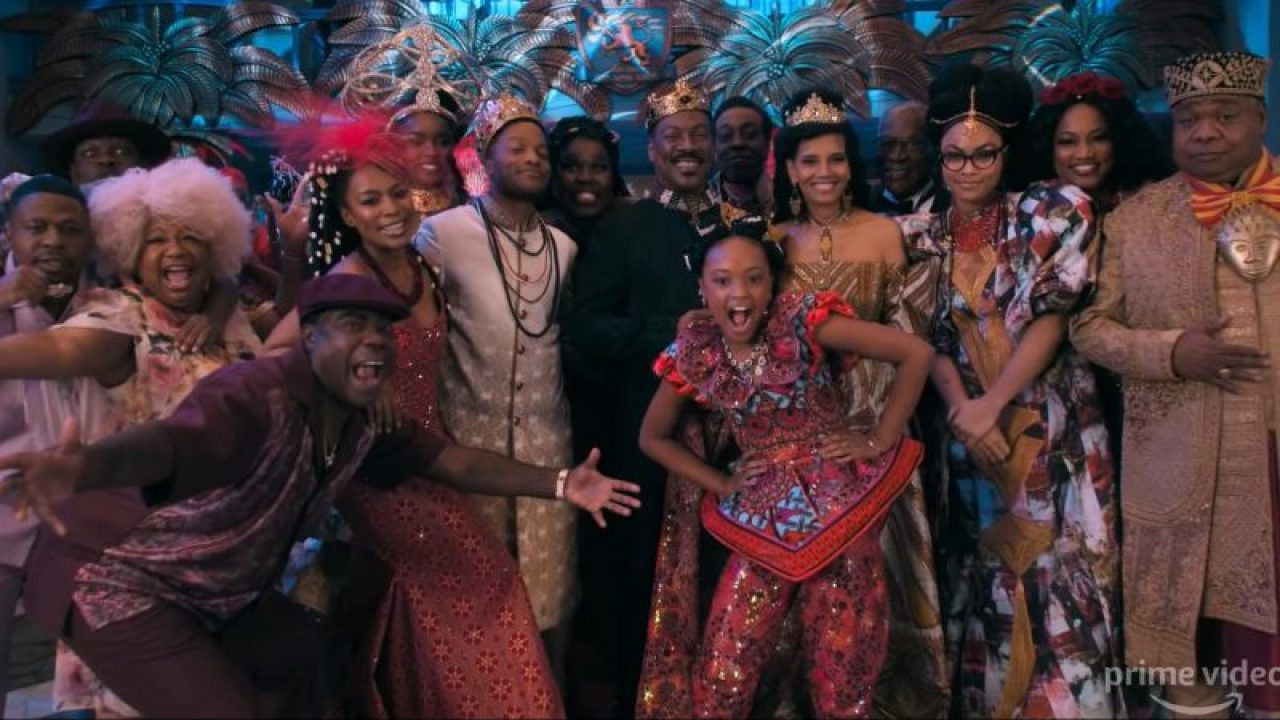 Stegall: I was catching up with Randy Spendlove over at Paramount and he casually mentioned that was the next project that they were doing. And to be honest, it sounded like a great idea, but I didn’t know what the reality was of moving that forward. And then, the next week, I get a meeting and I’m sitting in the room with the director. It’s a lot easier than it tends to be, but I’ve been in the trenches working on projects and working on indie films and scoring various things alongside other composers that are veterans here in Los Angeles for the past 18 years. And to be honest, when this movie came up, it was somehow a perfect fit. Like everything that was needed was something that I at one point or another had done in my life. And it was a variety of things that were needed musically for the score. So it was fun.
Stegall: I was catching up with Randy Spendlove over at Paramount and he casually mentioned that was the next project that they were doing. And to be honest, it sounded like a great idea, but I didn’t know what the reality was of moving that forward. And then, the next week, I get a meeting and I’m sitting in the room with the director. It’s a lot easier than it tends to be, but I’ve been in the trenches working on projects and working on indie films and scoring various things alongside other composers that are veterans here in Los Angeles for the past 18 years. And to be honest, when this movie came up, it was somehow a perfect fit. Like everything that was needed was something that I at one point or another had done in my life. And it was a variety of things that were needed musically for the score. So it was fun.
CS: Your music alternates between light, playful underscore to big, bombastic themes filled with African influences, but it also has to work alongside the numerous songs that are played throughout the film. How do you balance all those different elements into one cohesive whole?
Stegall: That’s a good question. [Laughs] You know, part of how that ended up being helped was Paramount decided to fly me down to set and actually supervise a lot of the musical moments that are actually on camera, which is also actually part of how I got the job. After I met with Craig, the director, I ended up doing a couple of demos based off of things that they needed music to shoot to, like there’s on camera music moments. And so, once a lot of those demos were working, it was probably the best to actually go be there on set and supervise the playback to the filming of those sequences. And that honestly helped inform some of the things I would do in the score later as far as the tone, the vibe, seeing these giant sets, being with the actors, being able to segue in-between songs, working very, very closely with the dance choreographer for the movie. That also influenced a lot of how – those musical sequences went down with – there’s a dance-a-thon. Like we were working very closely in terms of sequencing, or you know, segues from score into songs.
One specific moment was the song “Get Off” that’s performed by Lavelle and Bopoto’s character. There was this grand entrance where these dancers would present General Izzi’s daughter Bopoto, and it needed to be the same tempo and the same feel as the Prince song “Get Off”. So yet another moment in making the score kind of predicts what the song was going to be in a subtle way, but hopefully seamless.
CS: Was that difficult or Is that something that you had done before in previous projects?
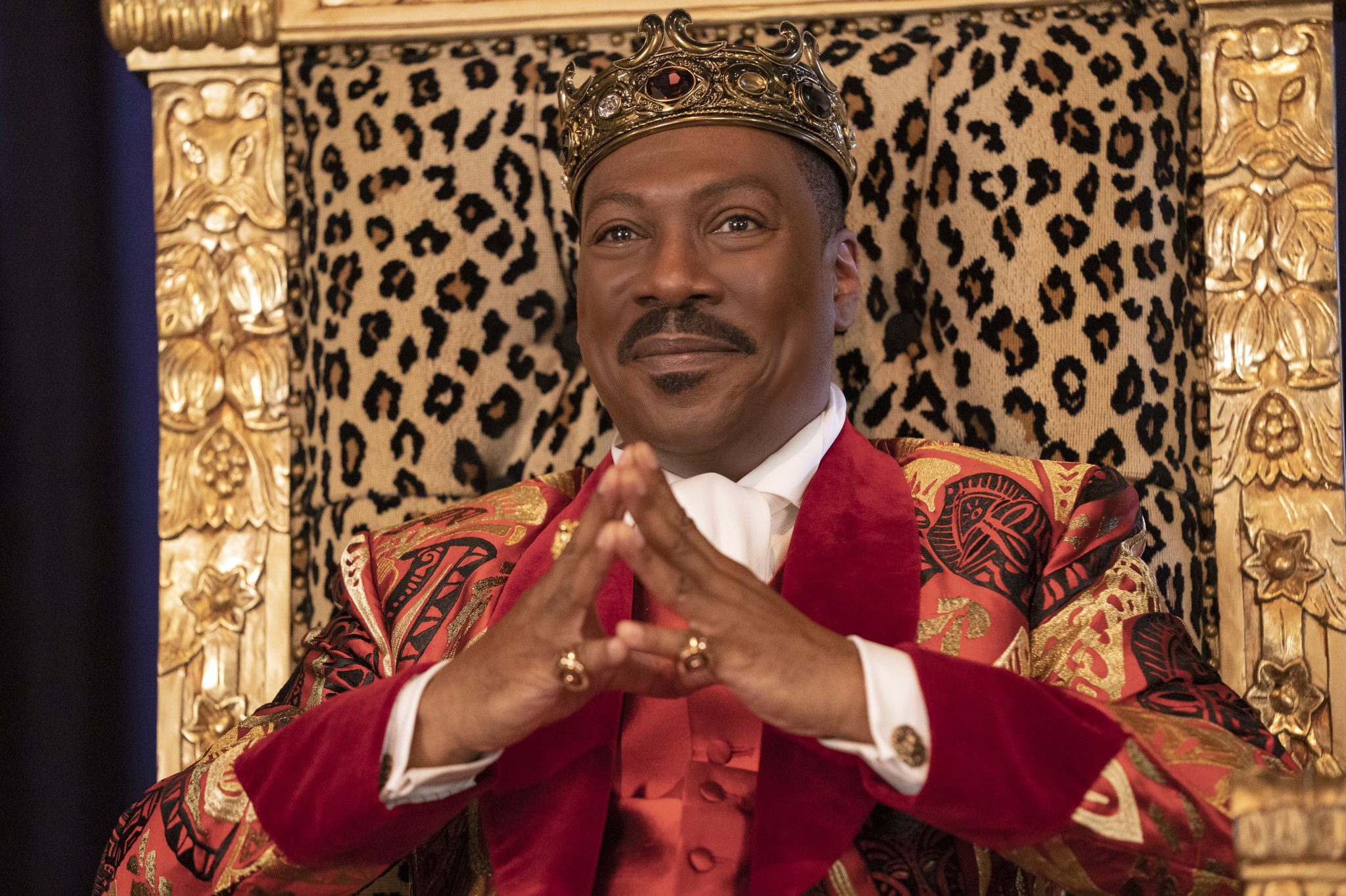 Stegall: I mean, it was so fun. I mean, it was so fun. I’m a huge Prince fan. I think a lot of us, the actors actually are Prince fans, which is probably why that song was used as a pop culture reference, because it really relates to a lot of the characters in the movie, something they would be a fan of, you know? And I grew up with Prince’s music and producing tracks, so to speak, because really it’s score, because we’re scoring the dancers’ movements and the choreography of their entrance, but it also feels kind of track-ish, like a track, you know, a song track. So yeah, it actually wasn’t a challenge, it was a liberating moment of, oh, this is a theatrical kind of set piece feel, which honestly I rarely get to do in score, but super excited.
Stegall: I mean, it was so fun. I mean, it was so fun. I’m a huge Prince fan. I think a lot of us, the actors actually are Prince fans, which is probably why that song was used as a pop culture reference, because it really relates to a lot of the characters in the movie, something they would be a fan of, you know? And I grew up with Prince’s music and producing tracks, so to speak, because really it’s score, because we’re scoring the dancers’ movements and the choreography of their entrance, but it also feels kind of track-ish, like a track, you know, a song track. So yeah, it actually wasn’t a challenge, it was a liberating moment of, oh, this is a theatrical kind of set piece feel, which honestly I rarely get to do in score, but super excited.
CS: So how much of the original score by Nile Rodgers influenced your work on the sequel? Or did you stay away from it because you didn’t want it inform your score?
Stegall: Yeah, that’s a good question. I mean, for me, I was just talking about this yesterday. For me, the score needed to feel like everything – it’s a celebration of Coming to America. Every single note, whether it’s romance, whether it’s action, whether it’s African, you know, more traditional music. In terms of Nile Rodgers, I mean, I feel like the first movie didn’t have as much score. It was a very different kind of movie. This is way broader. And I was encouraged to use the theme from the song Coming to America, and when I say encouraged, it was kind of like, whatever I feel is appropriate, go for it, because it ends up tying the feel and the song from the first movie into this movie as well as that song that’s been re-recorded for this movie. So when we finally hear the song while Akeem and Semmi are on the plane on the way to New York, it makes sense. We get little nods to it throughout the score after that point, you know, because we also hear it, to my knowledge, over the end credits, although I haven’t seen the final end credits. I was told it was fixed in there.
CS: Did you have to fight for certain pieces of music to make it into the final cut?
Stegall: The only thing in terms of fighting for is like, I really, really, really wish I asked specifically the director and the editors to make the dance sequence as long as it possibly could because for me, that was one of the things that grounded us in Africa. Our sequence in this movie ended up being I think about 30 seconds as the dancers coming out, they’re clapping, the flags are waving. But that was one of my favorite parts about the first movie, is the elaborate dance sequence and the costumes that were all kind of uniform. It was such a uniformed strength to the vibe, feel and look of Africa as we’re seeing Zamunda in this celebratory form. It’s a pre-wedding celebration, that moment. And although our moment is more of a funeral, again, being on set, we were filming all that dance stuff for like, three or four days. It was a lot of dance footage, but Craig was very, very, very excited about using themes in this movie. So that was one of the things that we jumped into, I would say, probably January of last year, or February, is coming up with some themes that could be helping the audience get to know our new characters, you know? There’s a theme for the love interest, Mirembe, as well as General Izzi, who’s our main antagonist of the film. And there’s a theme for Prince Akeem, when he’s being either kingly, acting like or talking about being a king or being a father. These are all moments that we ended up using in our movie.
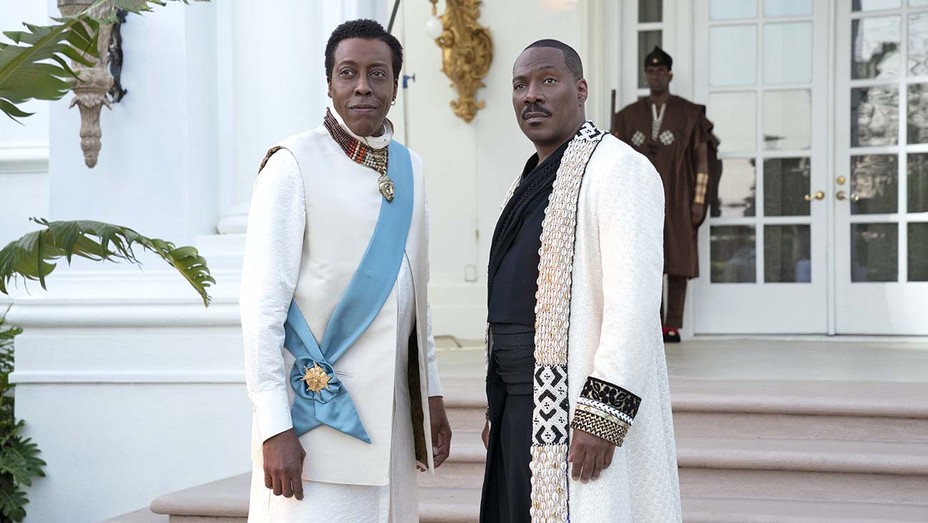 CS: And as you already alluded to, this is a very different style of film. There’s a lot more intimate moments in Coming 2 America between the characters, between the different relationships that are on screen. Did you enjoy writing the more dramatic underscore?
CS: And as you already alluded to, this is a very different style of film. There’s a lot more intimate moments in Coming 2 America between the characters, between the different relationships that are on screen. Did you enjoy writing the more dramatic underscore?
Stegall: Oh I loved it. I mean, one particular scene, I mean, there’s definitely a moment where as a love interest, Lavelle and Mirembe’s character are really getting to know each other in the love garden. That was a moment that I got to really kind of slow the pace down and really become intimate. I wanted that theme to kind of feel like a blanket of Africa, with all these different kinds of marimbas, glass marimbas, wooden marimbas, you know, African marimbas, bass marimbas, all kind of tremblingaround this melodic theme being played on the strings. And then, the first cue that we recorded with the string orchestra, or the string section of our orchestra was the first demo that I wrote for the movie. And I ended up using it in a place that it wasn’t originally intended for, but it is basically in the scene where Akeem and Lavelle are in the field talking about – they’re kind of getting to know each other and they meet the elephant Babar, which is, he was young in the first film and now he’s talking about legacy and the fact that, you know, Babar is a father now. And it ended up becoming Babar’s theme. So that was a super expansive, fun moment that we knew we had to use a live orchestra on. So fun.
CS: Speaking of all these different instruments, were there any types that you hadn’t used before that you had to familiarize yourself with?
Stegall: Absolutely. So there’s a woodwind player that specializes in epic woodwinds. Pedro Eustache, is his name. He played a few instruments over the phone for me and I was like, I knew I had to have him on it. He’s got so many to choose from. I said, I need to layer it down, and he chose a couple to just play for me on the phone and one was called the fula flute. And it’s one that you sing and play at the same time and he said, please don’t ask me to play this because I’ll end up passing out. When it’s performed, it’s so intense. So the moment he played the first note, I was like, I’m sorry. This has got to be that. That’s fate. It sounds so authentic and crazy. And the other that he played was called the contra bass flute, which is actually, if he’s standing up, it’s taller than he actually is. Another instrument that he’s not only blowing into, but also singing into and making percussive sounds with his mouth as he’s doing it. One other funny thing is our percussionist featured, his name is Sidney Hopson, when I was getting into investigating his expertise with percussion, I came across an Instagram clip that he had, where he was snapping his fingers really fast. And I was like, okay, this guy, I’m literally writing a cue just so he can snap his fingers to it, because I’ve never heard anybody do it that fast. That’s crazy.
And it just adds to the lightness and the fun spirit of the organic quality of adding humans, because during the pandemic, obviously we hadn’t gotten into that. But there was a ton of remote recording. All woodwinds had to be recorded, all bass drums, guitar, harp, our woodwind player organ, all remotely. And so, it was quite an experience, when I say the assembly of the score, like these parts were coming in hot.
CS: Okay, so I’m going to switch subjects just slightly here because I know we’re coming down to the wire. But you scored the music for Our Star Was Stories. And I just have to ask, how amazing is it to be part of the Star Wars legacy? And is there any chance we’re going to hear more of your music in other Star Wars projects moving forward?
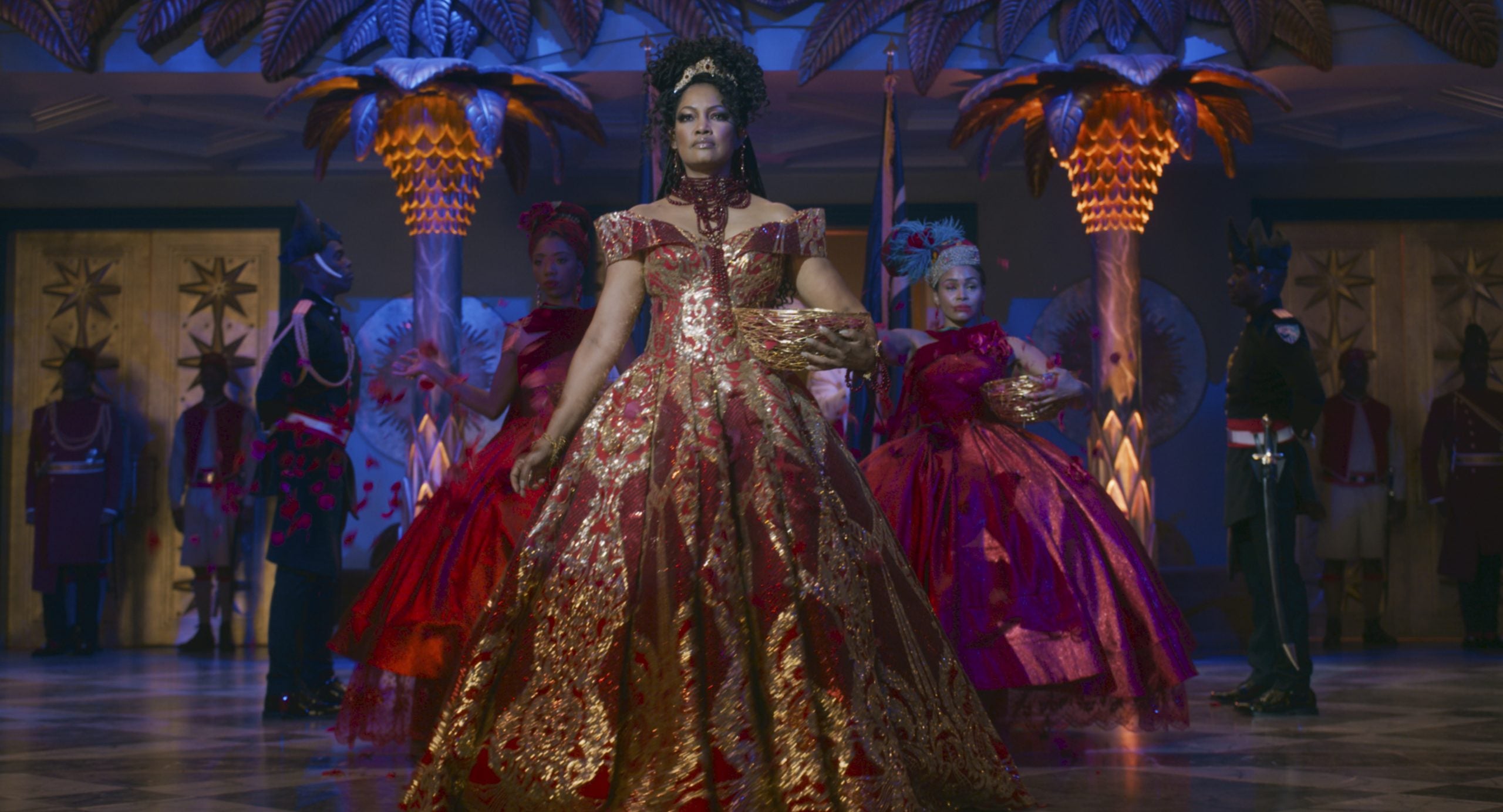 Stegall: I’ll tell you what. There’s nothing more I would wish for. I mean, I would love that. I love the guys that I’ve gotten to work with and know up there at Lucas Films. And this is amazing, having been a part of that legacy. We just saw recently that our series was featured in “Star Wars Insider Magazine”. There’s like a six-page article just about the series, and exposing people that people have used the Star Wars, a lot of the philosophies to deal with life in different ways, whether it be home schooling or dealing with death or cancer or identity issues. To be able to musically score that in a Star Wars language, you know, kind of a docu-series was not something that I would think for any reason you would get to do. You think it’d be played very straight, but we got to be colorful and Star Wars-y with it.
Stegall: I’ll tell you what. There’s nothing more I would wish for. I mean, I would love that. I love the guys that I’ve gotten to work with and know up there at Lucas Films. And this is amazing, having been a part of that legacy. We just saw recently that our series was featured in “Star Wars Insider Magazine”. There’s like a six-page article just about the series, and exposing people that people have used the Star Wars, a lot of the philosophies to deal with life in different ways, whether it be home schooling or dealing with death or cancer or identity issues. To be able to musically score that in a Star Wars language, you know, kind of a docu-series was not something that I would think for any reason you would get to do. You think it’d be played very straight, but we got to be colorful and Star Wars-y with it.
CS: Do you have any other projects coming up in the future that you can share with us?
Stegall: One thing I can share is that I’m working on a supernatural thriller for Universal, which should be out sometime later this year, but just super exciting, and it’s going to be a complete 180 from everything I’ve been doing for the past two years, complete 180. Head turning, head spinner.
To learn more about Jermaine, or to hear more of his work, visit: https://www.jermainestegall.com/.
MARK CRAWFORD DISCUSSES THE SOCIAL DILEMMA
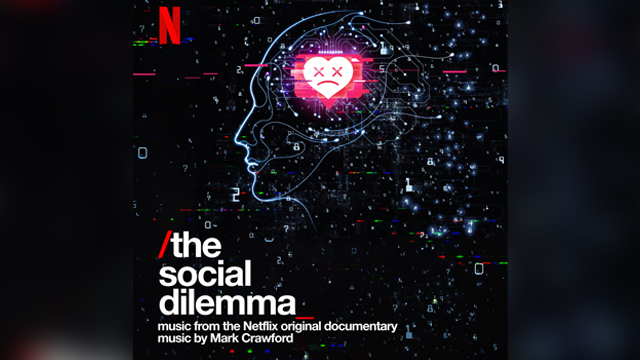
The Social Dilemma is a fascinating look at the dangers inherent with the technology we hold in our hands on a daily basis. Driving this dark documentary is a powerful score by Mark Crawford, which underscores the drama in a manner that is both beautiful and chilling. Crawford spoke with CS Score about his work on the film and also delved into everything from his views on technology to his own career as a composer.
ComingSoon.net: So what challenges did you face when tackling this project?
Mark Crawford: Yeah, absolutely. I think the biggest challenge is more about the timeframe of the score. I had basically just until December to create the music for a 93-minute documentary. And Jeff [Orlowski] and Davis [Coombe], working with them, they really take their time on the edit. They make sure that what they put out is like, perfect. So it was a lot of chasing that as well. Jeff and Davis take their time on the edit and make sure that everything is perfect and what they put out to the world is right. So you know, we were editing right down to the very last minute before we went off to Skywalker Sound and put the whole thing together musically and sound-wise.
CS: The main focal point of the film discusses the dangers of modern technology, most notably social networking. So how did you approach this subject with your music? And what were you trying to say with your score?
 Crawford: Yeah, so I was really interested in the dilemma aspect of the film, the structure of the film is unique in that it’s like a documentary mixed with a narrative. But I also saw this as an opportunity to explore a lot of dilemmas thematically throughout the film. So it’s real versus digital, humans versus technology. And with that, I saw it as an opportunity to create tension with the instruments that I chose. So for instance, with every acoustic instrument, I think about what would be the digital counterpart to that, almost like a digital doppelgänger that’s in the film with a digital avatar. I started thinking about for every acoustic instrument, what would be a sort of like a synthesized version of that instrument as well.
Crawford: Yeah, so I was really interested in the dilemma aspect of the film, the structure of the film is unique in that it’s like a documentary mixed with a narrative. But I also saw this as an opportunity to explore a lot of dilemmas thematically throughout the film. So it’s real versus digital, humans versus technology. And with that, I saw it as an opportunity to create tension with the instruments that I chose. So for instance, with every acoustic instrument, I think about what would be the digital counterpart to that, almost like a digital doppelgänger that’s in the film with a digital avatar. I started thinking about for every acoustic instrument, what would be a sort of like a synthesized version of that instrument as well.
CS: How much of your personal ideology on these subjects influence your score?
Crawford: Yeah, yeah, definitely. I think for this one, originally I started sketching out using an instrument called the modular synthesizer. And it’s kind of basically a crude form of a synthesizer with knobs and wires hanging out. But it would generate these sounds that were kind of on the brink of is that noise or is that music? And sometimes it would kind of go out of tune. Sometimes it would go back in tune. And so, I just kind of followed that as a way to add a base layer in the music. And it’s sort of like this constant uneasiness that you feel in the store. And I kind of used that throughout the film to kind of move from this traditional film score sound to warping it and making it feel uneasy and not right. And that’s sort of my feelings about social media is, we started using this technology for keeping in touch with friends and posting what we like to do and creating music and all this stuff. And now it’s turned into something that feels uneasy, that feels like it’s transformed into something that we need to fix.
CS: Absolutely. See, that’s cool right there, because it’s one of those little subtle things that you’re not really going to pick up on …
Crawford: Yeah, I think one of my favorite comments that I get from people is that they watched the movie, they didn’t really notice the music, which is great for a film composer, but they felt uneasy throughout the film, they felt like slowly sliding down into a horror movie without even realizing it. So I sort of like that.
CS: That’s exactly what it feels like. It feels scary. And one scene in particular was every time it cuts to those guys monitoring all of our choices and choosing things for us — it just almost has like a Twilight Zone feel to it.
Crawford: Yeah, yeah, totally. Yeah, I mean, that modular, that synthesizer that I was talking about, I was trying to find sounds that felt like it was producing like human sounds, that felt like there’s a beast inside the machine. And that’s what I was really interested in, is like, not knowing whether something was human or digital.
CS: What is your process like? When you screened the film the first time, do you search for a moment that you compose and then build off of?
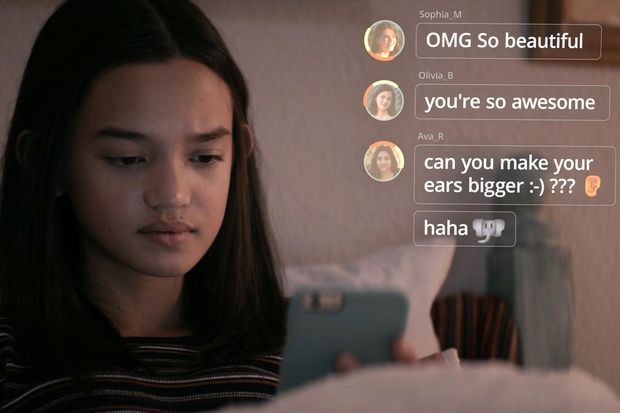 Crawford: Right, totally. So yeah, I kind of mapped out the whole movie just in terms of beats and like, storyboards, because I knew that I wanted to create a score that kind of transforms over the course of the film. So I knew I wanted to start out with this very traditional film style. And then, there was this midpoint in the film, where Ben starts to get overtaken, and then is also looking into the mirror and having questions and thoughts about perceptions of beauty. And then, by the end, you kind of have this version of the music that’s both hybridized with the digital elements and the human elements, where they kind of harmonize together. So I kind of picked up those three story points, at least in the music. And then, kind of worked to fill in the gaps between those, if that makes sense.
Crawford: Right, totally. So yeah, I kind of mapped out the whole movie just in terms of beats and like, storyboards, because I knew that I wanted to create a score that kind of transforms over the course of the film. So I knew I wanted to start out with this very traditional film style. And then, there was this midpoint in the film, where Ben starts to get overtaken, and then is also looking into the mirror and having questions and thoughts about perceptions of beauty. And then, by the end, you kind of have this version of the music that’s both hybridized with the digital elements and the human elements, where they kind of harmonize together. So I kind of picked up those three story points, at least in the music. And then, kind of worked to fill in the gaps between those, if that makes sense.
CS: No, that’s very interesting. The music at the end of the film is very somber. Is that your way of saying we’ve lost?
Crawford: I think I kind of ended the movie on an unresolved note. And I think that’s how our grappling with this problem is. It’s unresolved. And we can envision a world in which we can live in harmony with computers, but there’s always going to be something not quite right. As Jaron says in the film, the pessimists are the true optimists in that they think something can still be better.
CS: Let’s talk about you a little more personally. How did you become a film composer? When did you know what you wanted to do it?
Crawford: I think I found the passion very early on in life when I was in elementary school. My older sister would listen to a lot of film scores while she did homework. And I would get like these little mixtapes with all of these scores from like Danny Elfman and John Williams. And I’d be listening to them at elementary school while all the other kids were listening to like, boy bands and what other bands there were. So I was super cool. And then, I also was just fascinated with making films. So I would create little films inspired by the movies I saw. And then, I would hold up like a boombox with these film scores up to the camera and kind of create my own in-house score. So I think this relationship between music and film, that’s where it kind of began. And then, the seed was planted there, and then I just learned some film production in college, got involved with documentaries in college, worked with Jeff in Chasing Ice, Chasing Coral and just eventually fell back in love with music, and that as my way of creating stories.
CS: When it comes to film production, you’ve worn many hats over the years. How has understanding all the tools of filmmaking informed or helped your job as a composer?
Crawford: Yeah, I’d say that’s for any film composer just starting out, I think it’s such an important thing to do, is to learn all the aspects of storytelling. It’s gaining empathy not only for the different vehicles for storytelling, but it’s also the people that make a film come together. Just knowing how to communicate to an editor and how to communicate to a graphics supervisor, just to know what they’re dealing with and how you can use your craft to fit into the whole part to elevate the story.
CS: In your opinion, what do you believe is the ultimate role of a film composer?
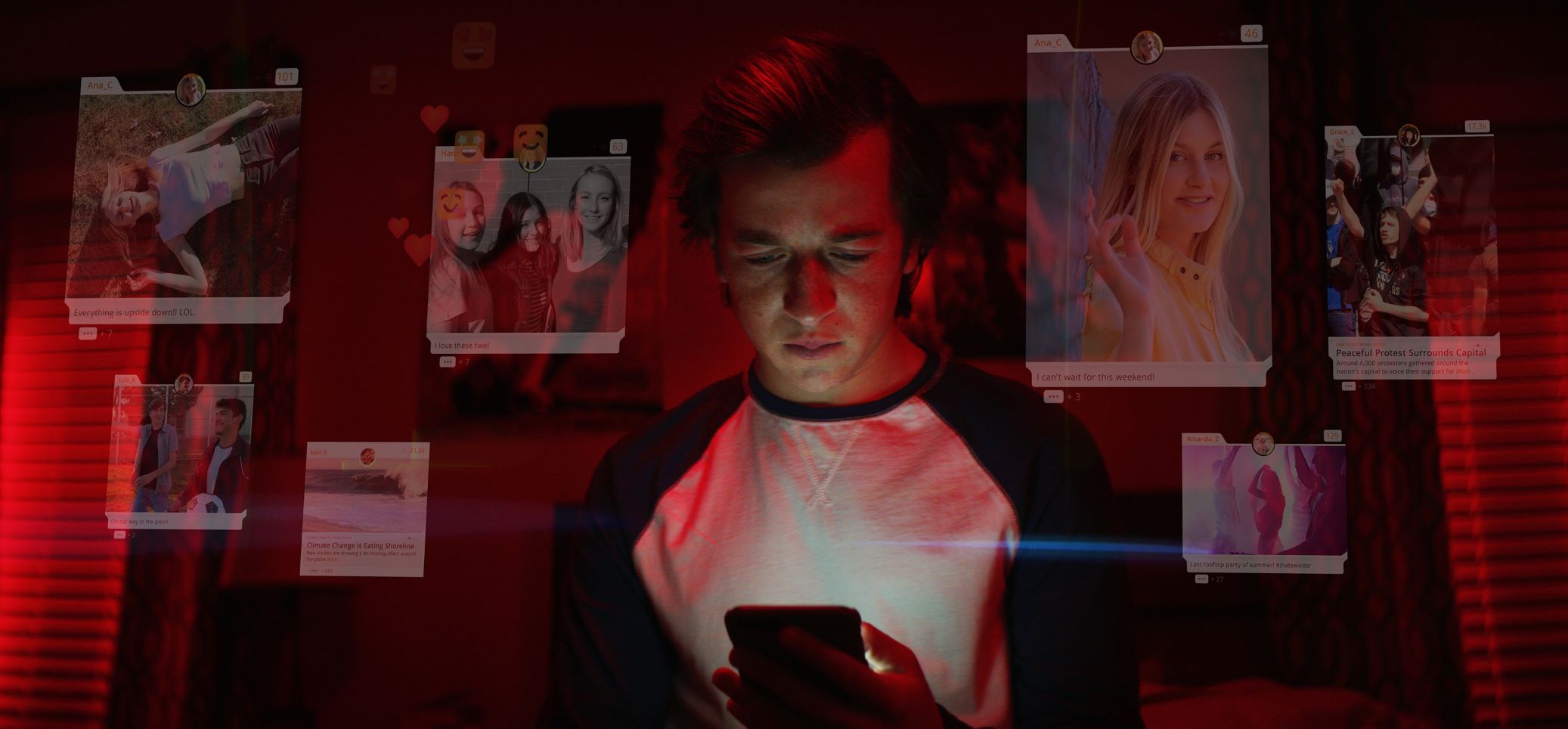 Crawford: I think obviously for every film, it’s different. For this one, I think it really required having that undercurrent of music throughout, just to slowly kind of guide the audience through the different worlds, both narrative and documentary. But I see the role as a composer as, you know, adding something sonically that isn’t already there. And I look at music not only in forms of the musical aspect of it, with notes and all of that, but I also look at it from in terms of like the sound design. And one of my favorite things about this project was working with Richard Gould at Skywalker Sound. And he and I kind of worked together. He did the sound design. And so, he was creating the room tone to either de-harmonize or harmonize with my music as it pertains to the scene.
Crawford: I think obviously for every film, it’s different. For this one, I think it really required having that undercurrent of music throughout, just to slowly kind of guide the audience through the different worlds, both narrative and documentary. But I see the role as a composer as, you know, adding something sonically that isn’t already there. And I look at music not only in forms of the musical aspect of it, with notes and all of that, but I also look at it from in terms of like the sound design. And one of my favorite things about this project was working with Richard Gould at Skywalker Sound. And he and I kind of worked together. He did the sound design. And so, he was creating the room tone to either de-harmonize or harmonize with my music as it pertains to the scene.
CS: Do you have any upcoming projects that you’re excited about that you can share with us?
Crawford: Yeah, I have a few projects that are kind of in development. I’m not sure how much I could talk about them, but I like to work with filmmakers very early on in the process, just because I like to kind of create sketches and build music into the DNA of the film very early on. And so there’s that. And I’ve also been really interested in creating original songs. I did a cover of “I Put a Spell On You” featuring Brandi Carlile and Renée Elise Goldsberry. And so, just working with amazing vocalists as talented as they are just inspired me to keep writing and keep creating my own stuff.
To learn more about Mark, or to hear more of his work, visit: http://markcrawfordmusic.com/.
